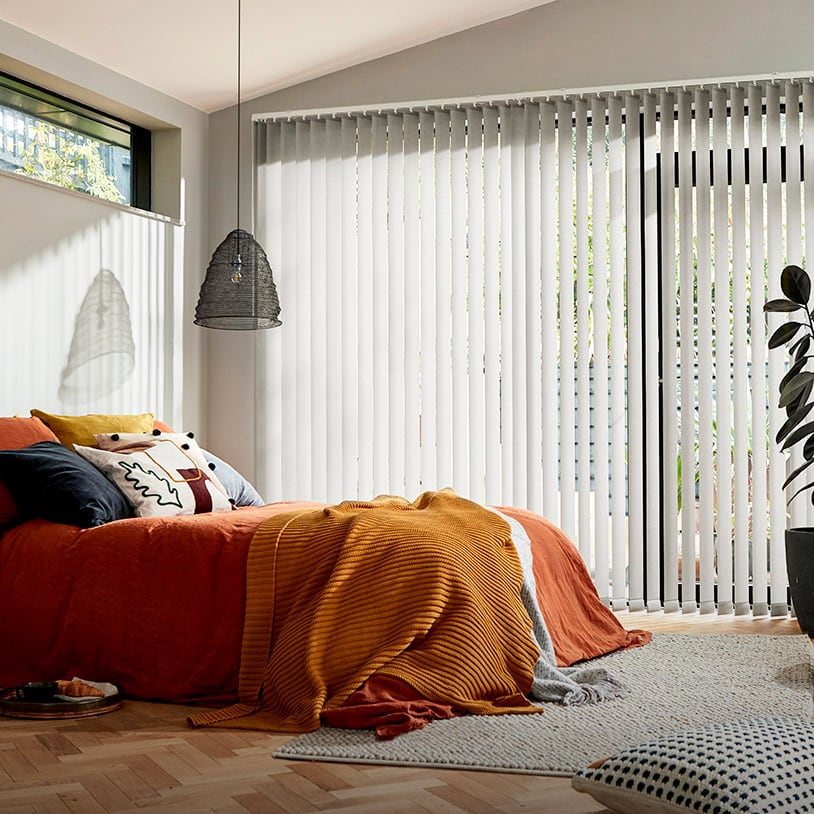Choosing the Right Type of Blinds
When you pair blinds with curtains, the blind choice comes first. It sets the stage for adding layers of style with curtains. The right blinds can simplify color schemes and enhance room aesthetics.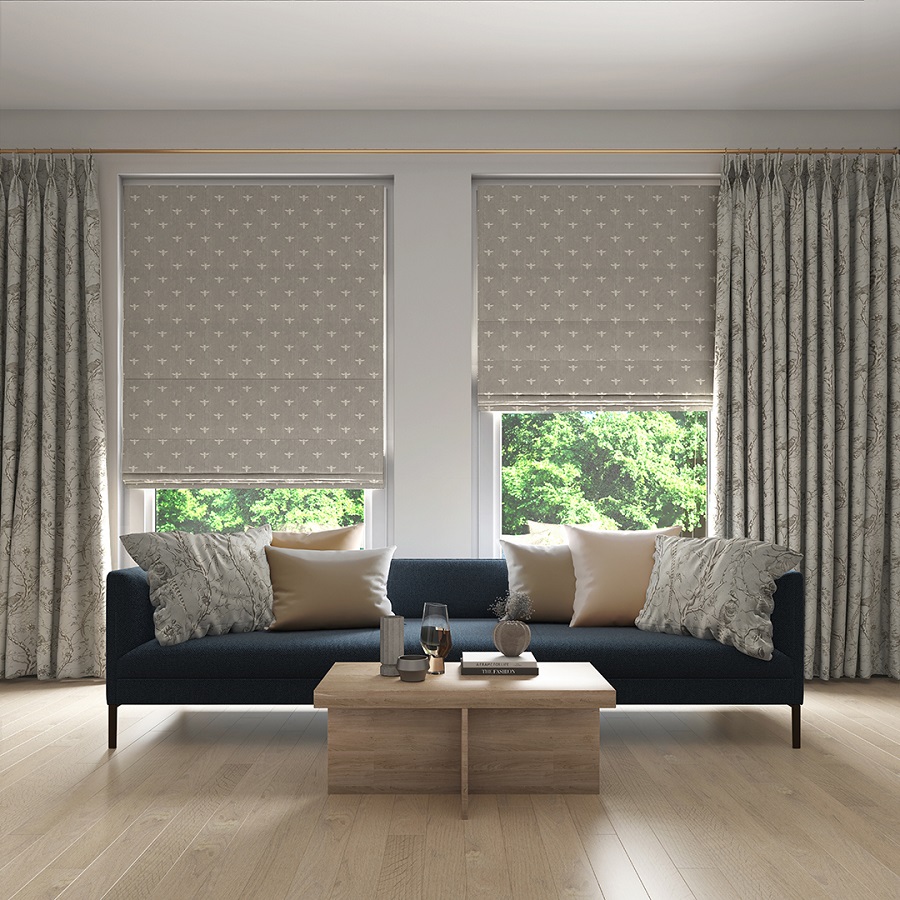
Roller Blinds Compatibility
Roller blinds, being sleek and simple, are highly compatible with curtains. They offer a clean backdrop that doesn’t compete with drapery designs. Select roller blinds in a color that compliments or matches your curtain choice for a cohesive look.
Venetian Blinds Aesthetics
Venetian blinds add a classic and structured feel to a room. Their horizontal lines and adjustable slats give you precise light control. When paired with curtains, they introduce depth and texture. Choose materials like timber or aluminium to align with your room’s style and color palette.
Selecting Colour Schemes and Materials
Selecting the right colour schemes and materials is vital when pairing blinds with curtains. The choices you make can either enhance or detract from the room’s overall aesthetic.
Coordinating with Room Colours
When choosing colours for your blinds and curtains, look at your room’s existing palette. Opt for blinds in a solid block of colour that can anchor the room. Then, select curtain hues that either match or contrast this shade tastefully. If your walls are neutral, you might choose a bold colour for curtains to add vibrancy.
It’s best to avoid mixing too many colours. Stick to one or two primary colours and one accent colour. This approach helps to maintain harmony. Also, consider the mood you wish to create. Soft, pastel shades can bring calmness, while deeper tones may add a sense of luxury.
The Impact of Timber and Aluminium
Both timber and aluminium blinds offer distinct looks that can be the focal point of a room. Timber blinds create a warm, natural feel. They work well with curtains in earth tones or those with organic patterns. Choose muted shades for a subtle look, or go for contrasting colours for more impact.
Aluminium blinds, on the other hand, lend a sleek, modern vibe. They are often found in modern or minimalist decor. Match these with curtains in cool tones like blues and greys. You might also pair them with geometric patterns or metallic accents to emphasize a contemporary atmosphere.
Remember, the key is to find a balance in your choices. The blinds and curtains should complement each other and the room’s decor. Strive for a cohesive look that brings out the best in your space.
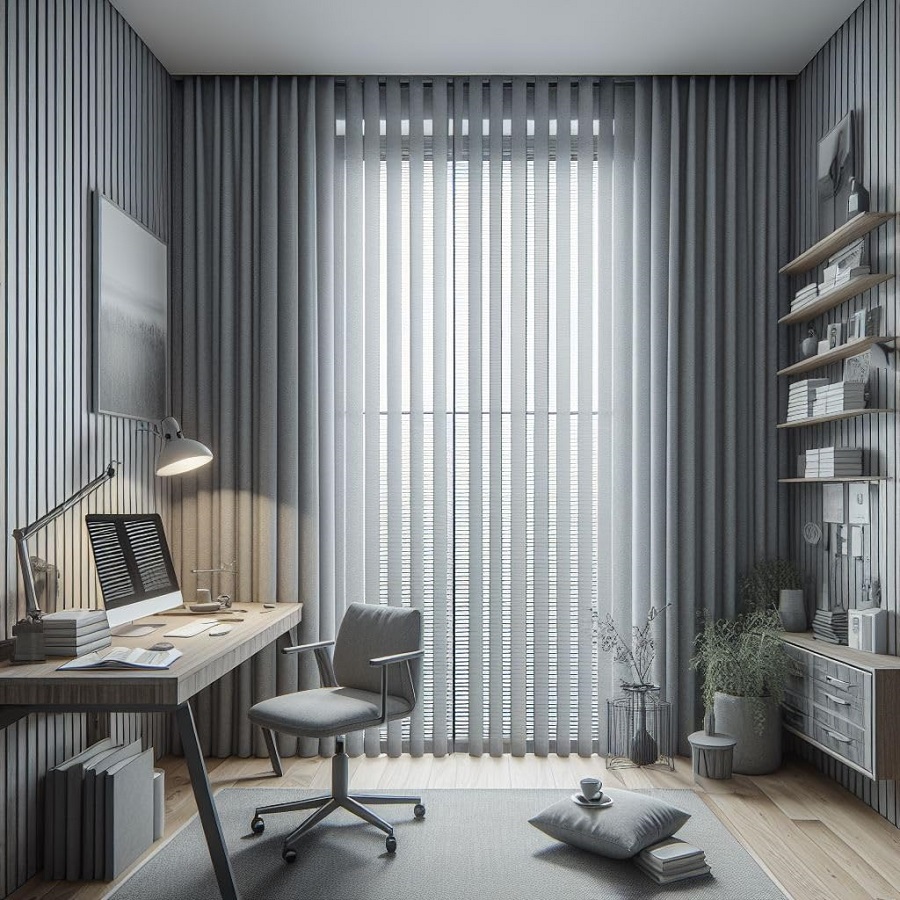 Patterns and Textures
Patterns and Textures
Choosing the right combinations of patterns and textures can create a stylish impact in any room. When blending blinds with curtains, consider the visual weight of each design feature. A thoughtful approach will bring balance and interest to your windows.
Solid and Print Combinations
Pairing solid blinds with printed curtains is a classic design choice. It avoids a cluttered look, especially in small rooms. If your blinds are a single color, choose curtain prints that include that hue. This creates a harmonious design. But, avoid mixing prints on both items. Too many patterns can overwhelm the space.
Utilizing Textures for Artistic Effects
Textures can add depth and character. Timber blinds bring a natural texture that works well with various curtain fabrics. For an artistic look, contrast smooth blinds with textured curtains. This adds a layer of sophistication. Remember, blending textures should enhance the room’s style, not overpower it.
Maximizing Window Perception
Optimizing the perception of windows can transform a room’s ambience. High and wide installations of curtains and blinds enhance the visual scale of windows, making spaces feel larger.
Enhancing Small Spaces with High and Wide Installations
For homes with limited square footage, the way curtains and blinds are installed can alter the perception of space dramatically. Placing blinds just below the ceiling and extending curtain rods beyond the window width tricks the eye into seeing a taller and broader window. This technique not only maximizes natural light but also gives the illusion of a more spacious room. In addition to the aesthetic benefits, this method can also make ceilings appear higher, contributing to a more open and airy atmosphere.
When choosing blinds with curtains for this approach, simplicity is key. Select roller blinds with solid colors that complement the room’s decor and pair them with curtains that extend from ceiling to floor. The uninterrupted vertical lines draw the eye upward, which is especially effective in making small rooms feel more expansive. Additionally, ensure that the curtain rods are seamless and blend with the wall color to avoid breaking the visual line, further enhancing the perception of height and space.
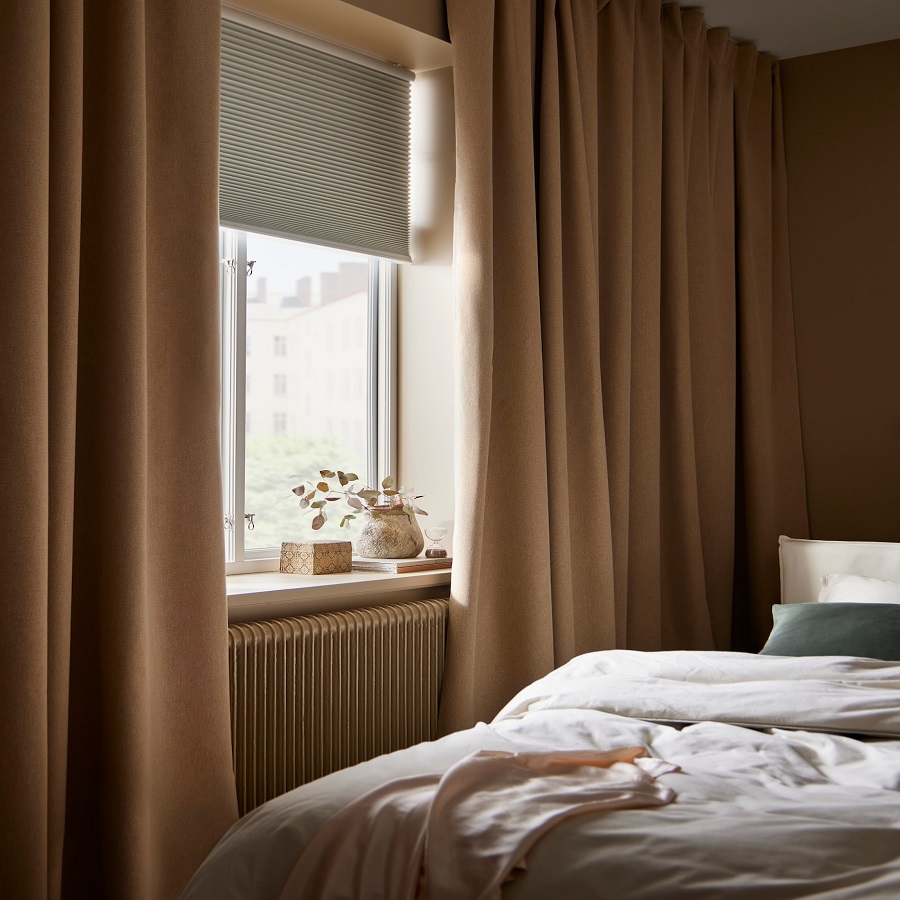 Accessorizing Your Window Dressings
Accessorizing Your Window Dressings
Accessorizing can elevate the aesthetic of your blinds with curtains combo. Here’s how to add functional flair.
The Role of Pelmets and Tiebacks
Pelmets add both style and function. They cover the curtain fixtures, creating a cleaner look. Use them for added insulation too. Tiebacks, on the other hand, pull curtains back for light or display. Keep them simple; fabric styles are versatile and subtle.
Creating a Streamlined Finish
For a polished look, hide tracks and rods. Recessed pelmets are sleek and tidy, perfect for modern decor. They also help in controlling light and temperature. Align the color of pelmets with your room for a smooth visual flow. A well-finished window dressing enhances the room’s comfort and style.
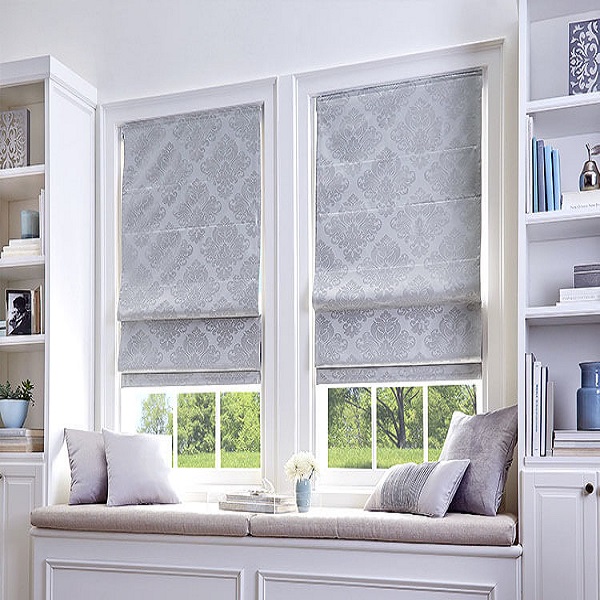 Creating a Cozy Atmosphere
Creating a Cozy Atmosphere
Creating a cozy atmosphere is essential when pairing blinds with curtains. One must consider how these elements contribute to a warm, inviting space. The right combination not only softens a room’s appearance but also makes it feel more intimate and comfortable.
Layering for Warmth and Fullness
Layering blinds and curtains is a successful way to add warmth and fullness to a room. Here are a few pointers:
- Start with solid-colored blinds as a base layer. They provide privacy and light control.
- Add curtains with a heavier fabric to bring warmth and sound insulation.
- Choose textiles in similar tones or textures for a harmonious look.
- Ensure the curtains are slightly longer for a luxurious, draped effect on the floor.
These steps help to create a snug feel, particularly in living rooms or bedrooms where relaxation is key.
The Importance of Curtain Fullness
Fullness is crucial when it comes to curtains. It’s all about the visual and tactile impression one gets from the fabric. Here are ways to ensure proper fullness:
- Measure windows accurately for curtains that are not too sparse or too bulky.
- Consider the curtain’s material; thicker fabrics often require less fullness.
- Use enough fabric so that curtains look ample even when drawn.
- The standard fullness ratio ranges from 2:1 to 3:1; meaning the fabric width should be two to three times the width of the window.
Following these guidelines will give your room a touch of elegance, making it appear cozier and more finished.
Room-Specific Curtain Choices
When decorating each room, creating a unique look is key. It’s not just about style but how blinds with curtains cater to the room’s function.
Customizing for Each Space
Every room has a story, and window treatments contribute to it. In the living room, where families gather, a combination of timber blinds and sheer curtains can spark warmth and openness. For bedrooms, consider blackout curtains over roller blinds to ensure restful sleep. In kitchens, easy-to-clean materials like aluminium blinds paired with light cafe curtains work best. Match the room’s purpose with suitable blinds and curtains.
Considering Room Atmosphere and Light
How a room feels hinges on lighting and ambiance. North-facing rooms, flooded with light, can benefit from light-filtering curtains paired with venetian blinds for adjustable brightness. For rooms on the cooler side, darker, lush curtains over snug roman blinds could add warmth and reduce drafts. Play with textures and colors to strike a balance between practicality and aesthetics. Keeping the room’s natural light and desired mood in mind helps create the perfect blend of functionality and style.
Through strategic pairing of blinds with curtains, you can create an atmosphere that’s both personalized and thoughtfully designed for every room in your home.
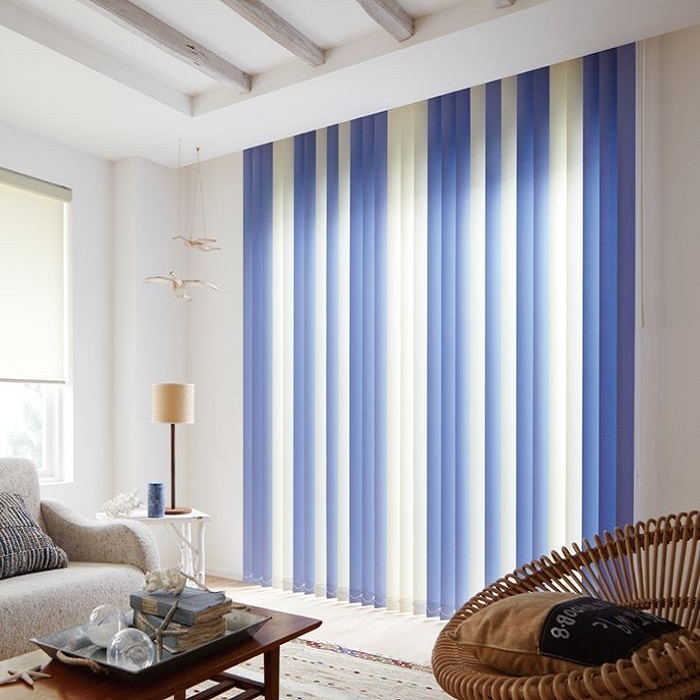 Matching Curtains and Blinds with Hardware
Matching Curtains and Blinds with Hardware
Coordinating Rod Colour
When you mix blinds with curtains, the rod colour must fit well. Picking a rod that echoes the tones of your blinds or curtains ties the look together. Go for a rod shade that matches or is close to the main colours in the room. For timber blinds, think about rich, warm rod colours. For sleek aluminium, consider rods with a cool, metallic tone. Make the match precise to keep the style on point.
Choosing the Right Finish for Rods
The finish of your curtain rods can change a room’s feel. Avoid high-shine finishes like glossy silver or brilliant gold. These can be too bold and clash with your blinds and curtains. Pick a matte or brushed finish instead. It’s subtle and keeps the focus on your blinds and curtains. A rod with a matte finish blends smoothly and looks modern. It’s important to balance style and function. Remember, rods should help the blinds and curtains work as one stylish set.
